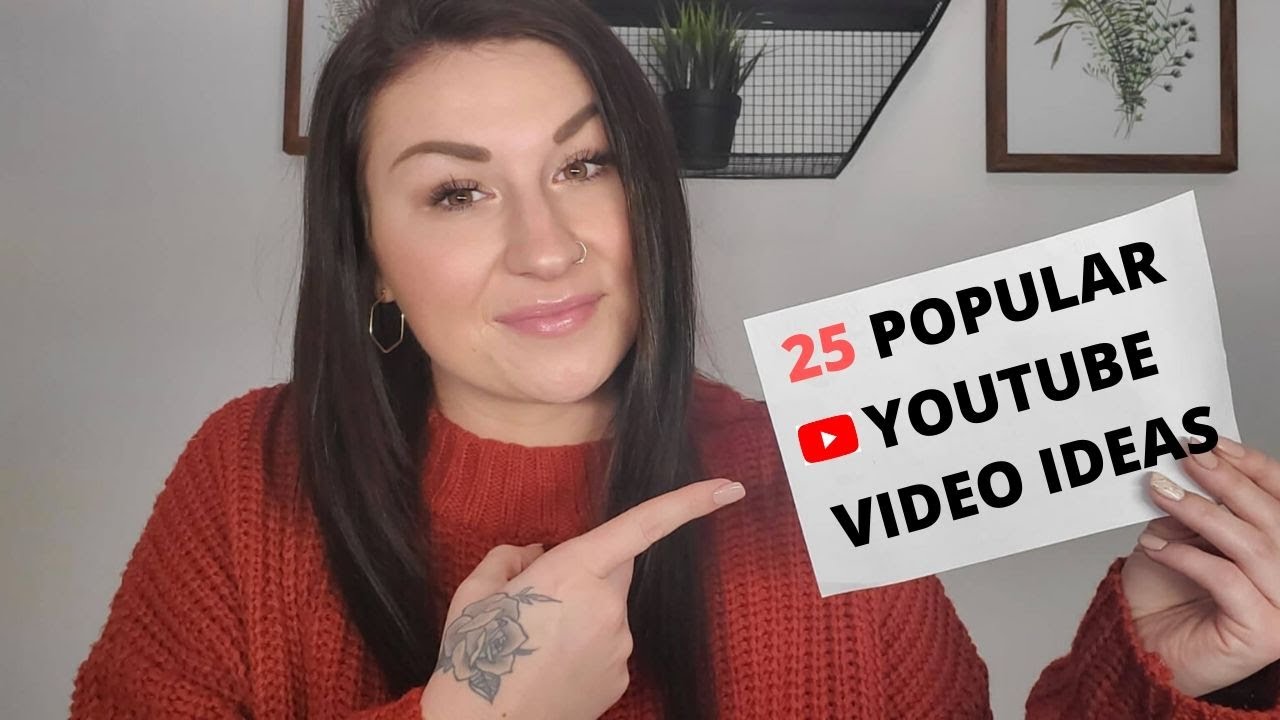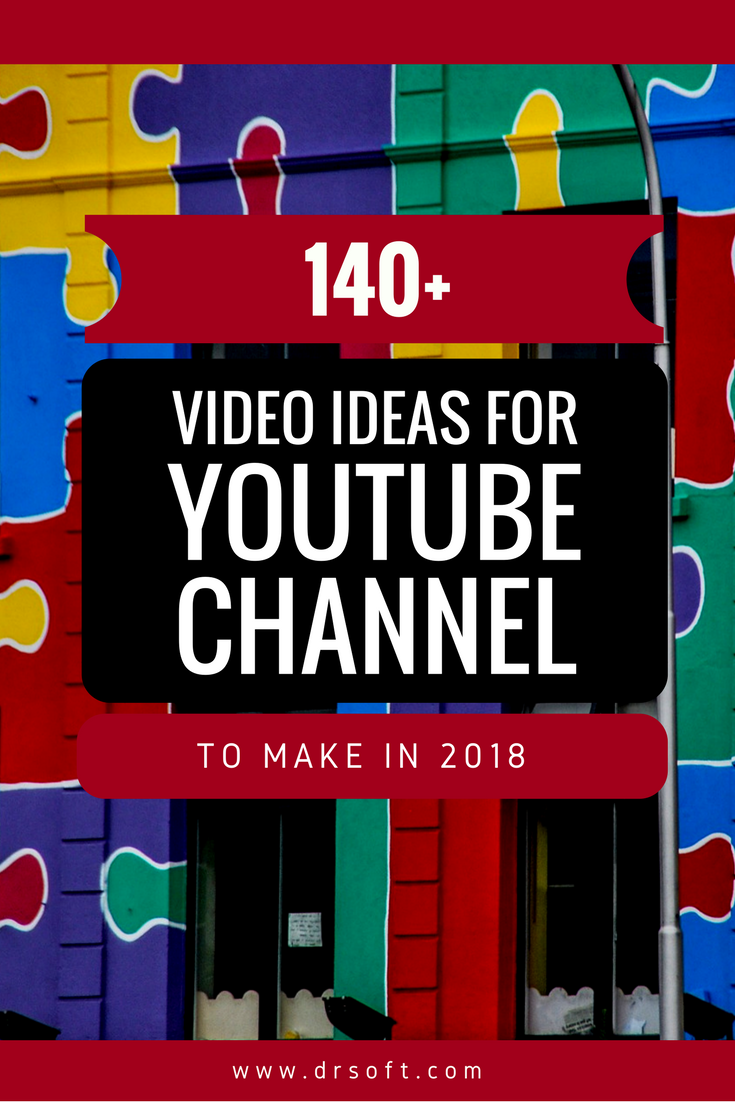Before you dive into creating videos for your YouTube channel, it's essential to grasp who your audience is. Understanding your viewers helps tailor your content to their needs and interests. Imagine speaking directly to a friend—it's much more engaging than addressing a large crowd.
To effectively understand your audience, consider the following:
- Demographics: Think about age, gender, location, and interests. Tools like YouTube Analytics can provide insights into who is currently watching your videos.
- Preferences: What type of content do they enjoy? This could range from tutorials to vlogs, reviews, or even educational content.
- Engagement: Pay attention to comments, likes, and shares. These metrics can guide you in understanding what resonates most with your viewers.
Once you have a clearer image of your audience, you can create content that speaks directly to them. This connection is crucial in building a loyal viewer base.
Furthermore, consider conducting surveys or polls on social media platforms to gather more direct information about what your audience wishes to see. A two-way dialogue fosters community and keeps viewers engaged. Always keep their feedback in mind as you brainstorm your content ideas.
Choosing Your Niche

Choosing a niche is one of the most critical steps in launching your YouTube channel. The niche you select will not only define your content but also help attract a dedicated audience. It's like finding your unique corner in the vast YouTube universe.
Here’s how to go about selecting your niche:
- Passion and Interest: The first factor is your passion. What topics can you talk about for hours? Choose something that excites you, as this enthusiasm will shine through in your videos.
- Research the Market: Conduct some research on existing channels in your potential niches. Analyze their content, engagement, and what seems to work well for them. Identify gaps in the market that you could fill.
- Skill Set: Assess your skills and knowledge. Are you a pro in makeup artistry, cooking, gaming, or tech reviews? Your expertise can set you apart from others.
Once you’ve gathered this information, try to narrow it down to a specific area within your niche. For example, instead of just "gaming," you might focus on "retro gaming" or "indie game reviews." This specificity allows you to stand out in a crowded space.
Remember that your niche may evolve over time. It's perfectly okay to shift focus as your interests or the interests of your audience change. Be open to experimentation, and don't hesitate to pivot if you find a new area that resonates with you and your viewers.
Lastly, aim for consistency in your niche. Regularly producing content in your chosen area helps build a dedicated viewer base who knows what to expect from you. With these tips, you'll be on your way to selecting a niche that not only works for you but also fills a need in the YouTube community!
Also Read This: Why Aren’t Your YouTube Videos Getting Views? Common Reasons and Solutions
3. Popular Video Ideas for Beginners

If you're just starting your YouTube journey, you might be wondering what kind of content will resonate with viewers. Here are some popular video ideas that are perfect for beginners:
- Introductory Video: Start with a warm welcome! Share who you are, what your channel is about, and what viewers can expect. It’s a chance to let your personality shine.
- How-To Tutorials: Everyone loves learning something new. Create tutorials on topics you're passionate about, whether it’s cooking, makeup, DIY crafts, or tech tips.
- Vlogs: Share a day in the life, a special event, or your experiences exploring new places. Authenticity resonates well with audiences, making vlogs a great starting point.
- Product Reviews: If you have a particular product you love (or dislike), share your thoughts! Viewers appreciate honest reviews that help them make informed decisions.
- Challenges: Participate in trending challenges or create your own. These are fun, engaging, and often encourage audience interaction!
- Q&A Sessions: Ask your viewers to submit questions and answer them in a dedicated video. It’s a great way to connect with your audience and make them feel valued.
- Educational Content: If you have expertise in a specific area, teach your viewers something valuable. This could be anything from financial tips to language learning.
- List Videos: People love lists! Create videos like “Top 10 Tips for…” or “5 Must-Have Items for…” to share your insights in a concise way.
These ideas are not just easy to produce; they also have the potential to attract a wide audience. Remember, the key is to stay genuine and passionate about your content. As you create videos centered around your interests, you’ll naturally attract viewers who share those interests!
Also Read This: Who is the Most Hated YouTuber? A Look at Controversial Creators
4. How to Structure Your First Video
Now that you've settled on an idea, it's time to think about how to structure your first video. A well-organized video can keep viewers engaged and make the editing process smoother. Here’s a simple structure you can follow:
- Hook: Start with an eye-catching introduction. Grab your viewers' attention within the first few seconds. You might ask an intriguing question or share a fun fact related to your topic.
- Introduction: After the hook, briefly introduce yourself and what the video is about. This helps viewers understand why they should stick around.
- Content: Dive into the main content. Whether it's a tutorial, a story, or a review, keep it organized. Here’s how to break it down:
- Use clear subheadings when applicable. This keeps information digestible.
- Incorporate visuals or examples to reinforce your points.
- Keep segments concise to hold attention—aim for 5-7 minutes for an introductory video.
Structuring your video like this not only keeps it organized but also enhances viewer experience. As you create more videos, you’ll find your own rhythm and style, so don’t hesitate to personalize this structure as you go. Happy filming!
Also Read This: How to Capture YouTube Audio on Mac: Tools and Techniques for High-Quality Recording
5. Tips for Filming and Editing Your First Video
So, you’re ready to film your first YouTube video! Exciting, right? But before you hit that record button, let’s cover some tips to ensure you create engaging content that keeps your viewers coming back for more.
Plan Your Content
Start with a script or an outline. It doesn’t have to be word-for-word, but having key points written down will help you stay on track. This is especially important if you’re nervous in front of the camera. A basic structure could look like this:
- Introduction: Briefly introduce yourself and your video topic.
- Main Content: Break down your topic into manageable sections.
- Conclusion: Summarize key points and include a call-to-action.
Having this blueprint will ease the filming process!
Lighting is Key
No one wants to watch a video that’s poorly lit. Natural light works wonders, so consider filming during the day near a window or outside. If you’re filming indoors and need extra light, investing in a ring light can make a huge difference. Aim for gentle, even lighting that reduces harsh shadows on your face.
Sound Quality Matters
Good sound quality can elevate your video more than you might expect. If you can, use an external microphone to ensure your voice is clear. If you’re on a budget, try to minimize background noise and speak clearly.
Keep It Steady
Nothing is worse than shaky camera work. If you don’t have a tripod, set your camera on a stable surface. This helps keep your footage looking professional—as you want your viewers focused on the content, not distracted by a shaky shot.
Editing Essentials
Once you’ve filmed your video, it’s time to edit. There are tons of user-friendly editing software options out there, like iMovie, Adobe Premiere Pro, or Final Cut Pro. Here are some editing tips:
- Cut Out Mistakes: Don’t be afraid to trim sections where you stumble or ramble.
- Add Music: A light background track can set the mood, but make sure it doesn’t overpower your voice.
- Incorporate Text and Graphics: Adding titles, captions, or graphics can enhance your video and make it easier for your audience to follow.
Remember, editing is your chance to polish your video, so take your time and have fun with it!
Also Read This: Is YouTube Automation Saturated? Insights and Trends You Should Consider
6. Optimizing Your Video for Search on YouTube
Congratulations! You’ve filmed and edited your first video. Now, you want to ensure people can find it. Let’s dive into some strategies for optimizing your video for search on YouTube.
Choose the Right Title
Your video title is the first thing viewers—and YouTube’s algorithm—will notice. Keep it relevant and catchy! Include keywords related to your topic that you think people might search for. For example, if your video is about making pancakes, a title like “Easy Pancake Recipe for Beginners” will be more effective than just “Pancakes.”
Craft an Engaging Description
The description box is an underutilized space! Use it to give viewers a brief overview of your video and include relevant keywords. Here’s a simple structure:
- First Sentence: Summarize what the video is about.
- Key Points: List major topics you cover.
- Links: Include links to your social media, website, or other related videos.
Keep the most important information at the top, as only the first couple of sentences will show up in search results!
Tags are Your Friends
Tags help categorize your video and tell YouTube what it’s about. Use a mix of broad and specific tags. For our pancake example, tags like “pancakes,” “breakfast recipes,” and “easy cooking” can work wonders. While tags aren’t as critical as titles or descriptions, they can help improve your video's discoverability.
Eye-Catching Thumbnails
People are visual creatures! Create an eye-catching thumbnail that represents your video’s content. Use bright colors, bold text, and clear images. You want your thumbnail to stand out amidst a sea of other videos in search results.
Engage Your Audience
Encouraging viewers to like, comment, and subscribe drives engagement, which is crucial for YouTube’s algorithm. Ask questions or for their opinions in your videos to spur conversation in the comments. This not only improves your video’s visibility but helps you build a community around your channel!
By following these optimization strategies, you increase the chances of your video reaching a wider audience. Happy filming and good luck with your YouTube journey!
Also Read This: What Does Subscribing to a YouTube Channel Really Mean? A Simple Guide
7. Promoting Your First Video
So, you've just hit that "publish" button and your very first video is live on YouTube! 🎉 But wait, how do you get people to actually watch it? Promoting your video is an essential step that many newcomers overlook. Let's dive into some effective strategies to promote your content and get those initial views rolling in.
Leverage Your Social Media: Don’t keep your video a secret! Share it across all your social media platforms. Whether it's Twitter, Instagram, Facebook, or TikTok, tailor your message based on the platform. For instance, create a short teaser or montage for Instagram Stories, or go for a more informal, conversational tone on Facebook.
- Use Engaging Captions: Writing catchy captions can intrigue your audience and get them to click on your link.
- Utilize Hashtags: Hashtags increase your discoverability. Use relevant hashtags that relate to your video content and niche.
- Join Relevant Groups: Participate in groups or forums related to your video topic and share your content there. Just remember—don’t spam!
Harness the Power of Email: If you have an email list, don't hesitate to send out a newsletter announcing your new video. Include enticing details and a direct link, so your subscribers can watch easily.
Collaborate with Others: Reach out to fellow YouTubers or influencers in your niche and propose collaboration. Whether it’s guest appearances, shoutouts, or joint projects, you can tap into their audience and bring more views to your channel.
Engage with Your Audience: Once your video is published, don’t just sit back and relax! Engage with the comments, ask viewers questions, and encourage them to share your video. A little interaction can go a long way!
Finally, be sure to monitor your analytics. Look at the traffic sources and see where most of your views are coming from. This data can help you refine your promotion strategies in the future. Remember, promoting your first video may feel like a task, but it's crucial to building an audience that will stick around!
8. Analyzing Feedback and Improving Future Videos
Congratulations on launching your first video! Now that it's out there, it's time to pay attention to the feedback and analytics to improve your future content. Analyzing what worked and what didn’t can be a game changer for your YouTube journey.
Check the Analytics: YouTube provides a treasure trove of data through its analytics tool. Look into metrics like watch time, audience retention, and click-through rates (CTR). These figures will help you understand what parts of your video captivated viewers and which parts might have caused them to click away.
- Watch Time: A higher watch time indicates that viewers are interested in your content. Aim for longer watch times in the future by keeping your content engaging!
- Audience Retention: This tells you how long viewers are sticking around. If there’s a noticeable drop-off at a certain point in the video, consider adjusting your pacing and content to maintain engagement.
- Click-Through Rate (CTR): Your thumbnail and title are critical. If your CTR is low, you may need to rethink your approach when it comes to these elements.
Engage with Viewer Comments: Your audience's feedback can be extremely insightful. Read through the comments section and take note of any constructive criticism or suggestions. Don’t be afraid to ask open-ended questions to encourage more interaction and gather opinions on what they liked and what they would like to see next.
Experiment and Iterate: Use the insights gathered from analytics and feedback to experiment with different styles, formats, and content ideas. Maybe your audience prefers tutorials over vlogs, or they love hearing your opinion on trending topics. Embrace this experimentation process, and don’t hesitate to switch things up!
Stay Consistent: Improving your content is an ongoing process. Stay consistent with uploading videos and applying what you learn from previous projects. Over time, you’ll naturally develop your style and voice, which will resonate with your audience.
Remember, getting comfortable with the feedback process and adapting your content accordingly will pay off in the long run. So keep those lessons in mind and get ready for an even better video next time!
 admin
admin








